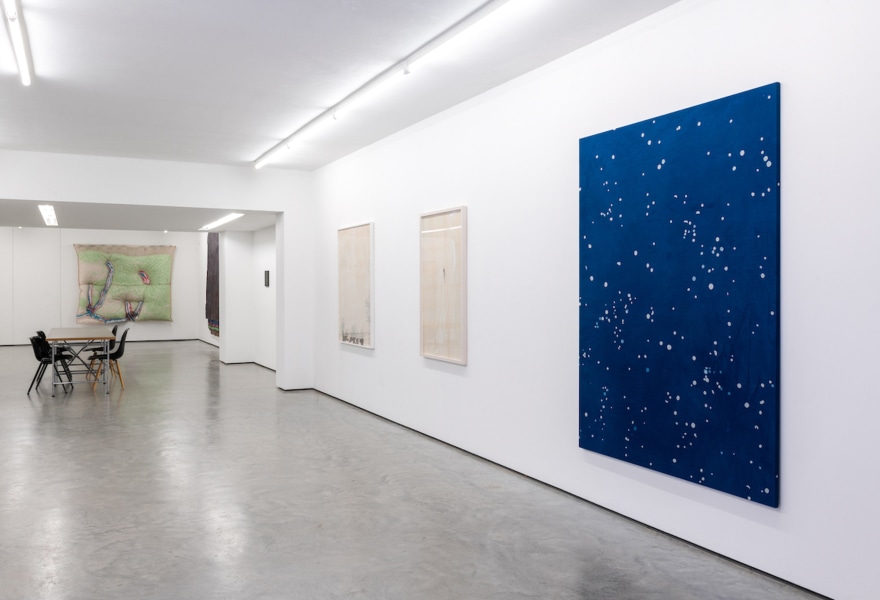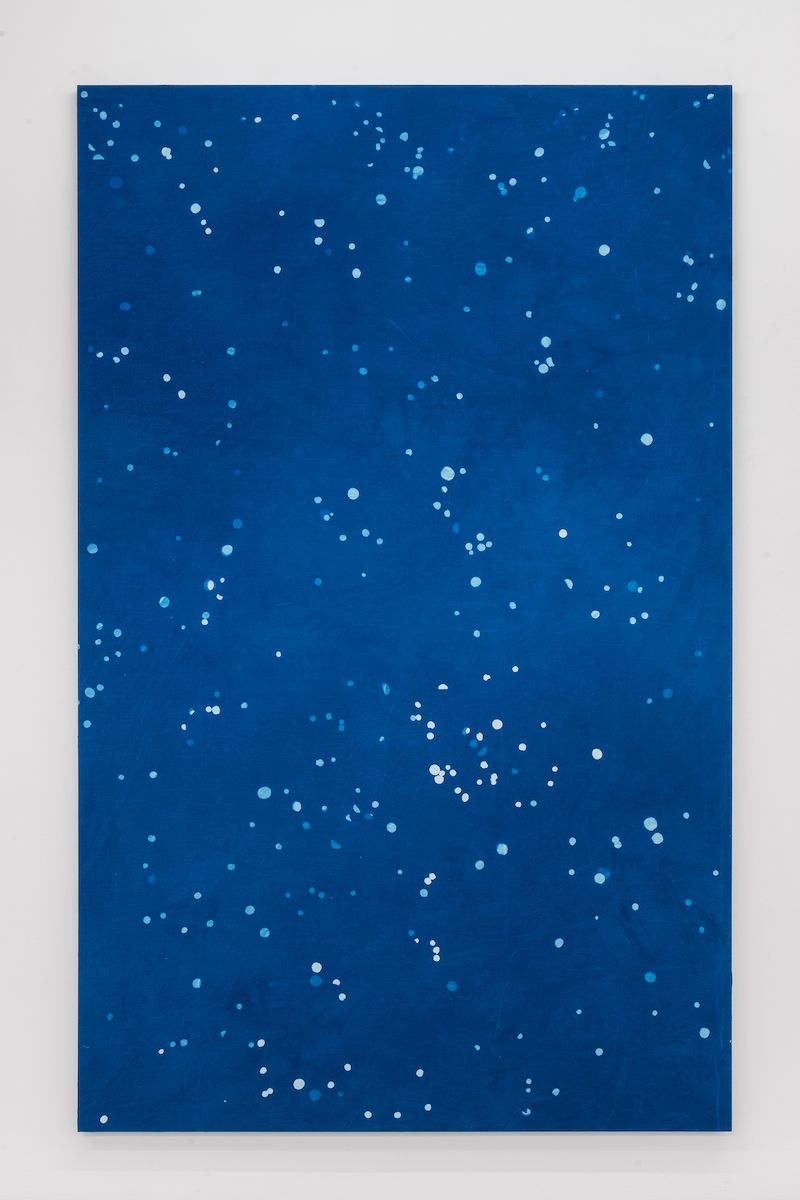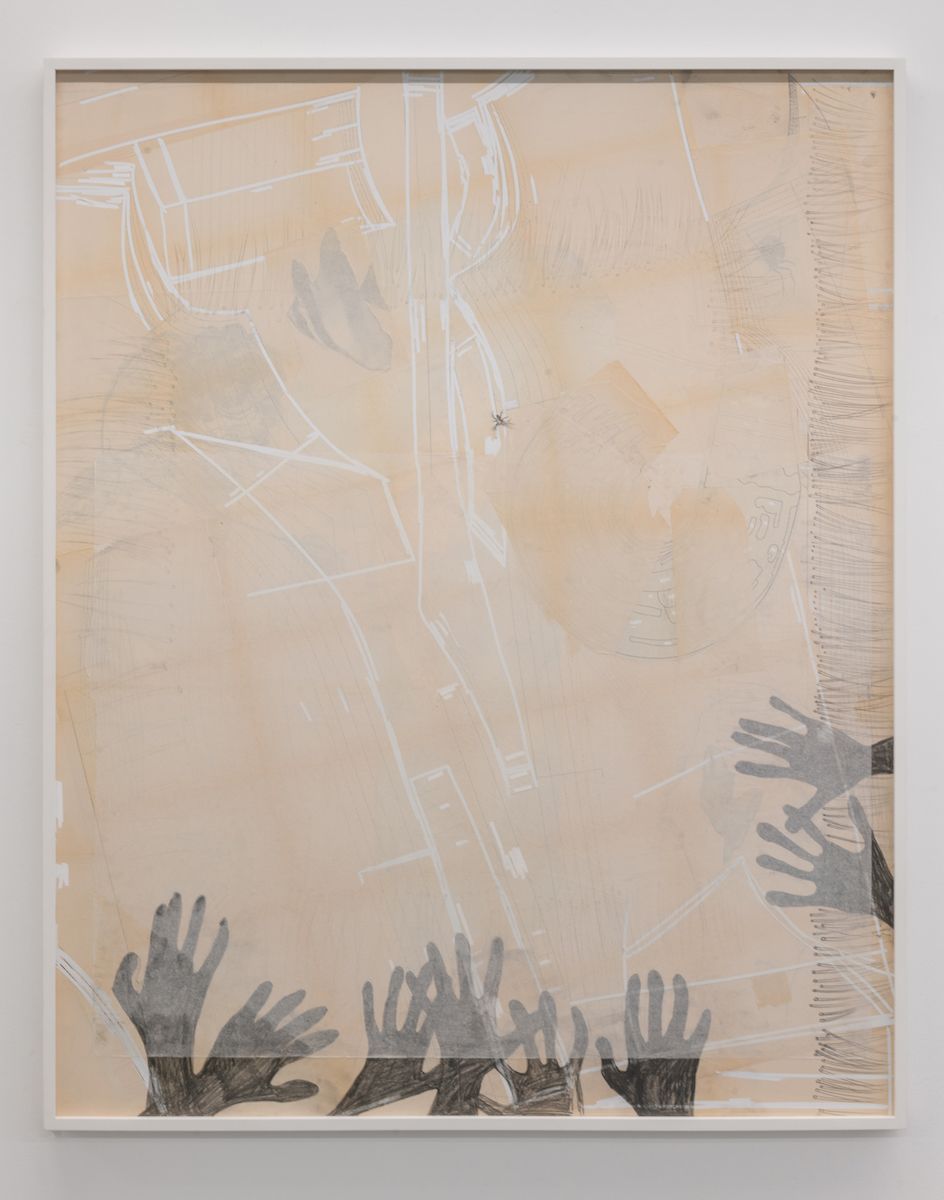27 february 2025, Flor Linckens
Last chance: material as memory at tegenboschvanvreden
Until 8 March, the group exhibition 'It takes three to tango' is on view at tegenboschvanvreden in Amsterdam, bringing together the work of three artists: Vicente Baeza, Chaim van Luit and Dieuwke Spaans. Each of them explores, in their own way, the tension between material, context and memory.
Vicente Baeza was born in 1992 in Santiago, Chile, where he studied fine arts at the Pontificia Universidad Católica de Chile. Between 2020 and 2022, he was a resident at De Ateliers in Amsterdam, where he continues to live and work. His practice delves into the interplay between the accidental and the intentional/manipulated, the physical and the personal, chance and time. His works are not static objects but fluid entities — more like diaries than paintings, acting as spaces that capture stories and experiences. His artistic journey began with a fundamental shift: he did not want to be a detached observer but rather an active participant. During his studies in Santiago, he used his own clothing as material, a second skin that he could shape and transform. Since then, his work has remained closely linked to physicality and the traces we leave behind. His materials — wallpaper, corrugated cardboard, mosquito netting, carpet, blinds and found textiles — undergo a process of friction, bending and repetition, as part of a performative act. Baeza unrolls them, applies colour, walks over them, rolls them up again and starts over. His process is not linear but a continuous dialogue between hand and material, allowing form to emerge organically rather than being predetermined. Techniques such as rubbing, pressing and impregnating allow his materials to respond to their surroundings. Sometimes, he carries his canvases in a backpack for days, exposing them to different contexts. The traces of these movements become integral to the work. As a result, the surface is not a neutral canvas but a layer of memory that absorbs and retains marks.
Chaim van Luit was born in 1985 in Heerlen. He graduated from the Maastricht Institute of Arts in 2011 and continued his education with a residency at the Jan van Eyck Academie. His work, situated at the intersection of conceptual and performative art, is included in the collections of institutions such as the Bonnefantenmuseum, Stedelijk Museum Schiedam and Museum Voorlinden. Van Luit works intuitively, guided by his surroundings: many of his ideas emerge during walks and bicycle rides, where he collects everyday materials — sometimes armed with a metal detector — to repurpose them in his work. His studio thus transforms into a kind of treasure trove. This process, reminiscent of archaeological research, forms the foundation of his practice, where minimalism and poetry converge. He employs simple forms and materials that gain depth through their origins and context. His work invites us to search alongside him, drawing connections between past, present and future. At tegenboschvanvreden, Van Luit presents, among other works, a large neon piece featuring brightly coloured lines in the shape of a hashtag, a universal symbol of searching and being found. This resonates with the core of his artistic practice: uncovering what lies hidden, whether in the ground, the past, or somewhere between the digital and the analogue. His work acts as a bridge between time periods, weaving together past and present. For the work "A Dime A Dozen", also on display in the exhibition, the artist used Roman coins on light-sensitive material. In the resulting cyanotype, they appear like stars in a night sky. In a world where information is shared and forgotten at lightning speed, Van Luit reminds us that some discoveries require a slower, more intuitive process.
Dieuwke Spaans was born in 1973 in Rheden and currently lives and works in Amsterdam. Her artistic practice began with drawing, but after her studies at the Rijksakademie van Beeldende Kunsten, her focus shifted to collage and assemblage. Spaans works with various types of paper, book pages, photographic material, and incorporates elements such as graphite and Tipp-ex. Through her use of materials and themes, her layered work contributes to a broader contemporary discussion on the relationship between imagery, memory and the subjective experience of reality. Spaans' oeuvre balances between figuration and abstraction, with some works containing more recognisable and narrative elements than others. Abstract and more concrete references to bodies, animals, flowers and landscapes appear throughout. These elements hover at the edge of visibility — half-hidden, transparent — making them elusive, like echoes of remembering and forgetting, an attempt to grasp the fleeting. Viewers are invited to bring their own interpretations to the work. Between 2018 and 2020, she was an artist-in-residence at the European Ceramic Work Centre (EKWC) in Oisterwijk, where she explored the medium of ceramics. Spaans has received several awards, including the Royal Award for Modern Painting in 1997 and 1998, and her work has been exhibited at Museum Kranenburgh, the Centraal Museum and Stedelijk Museum Schiedam. Her pieces are part of the collections of the Dutch AMC hospital and De Nederlandsche Bank.



